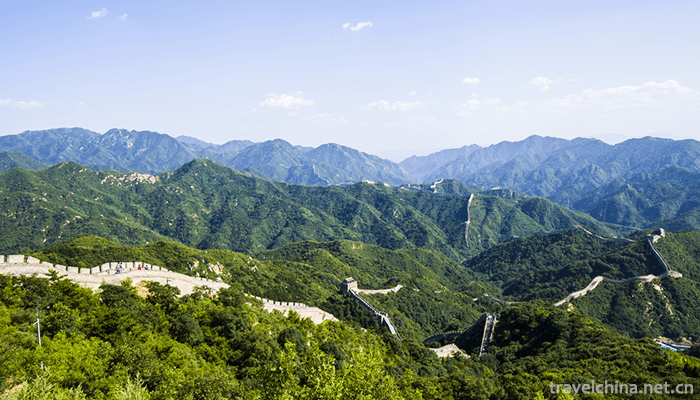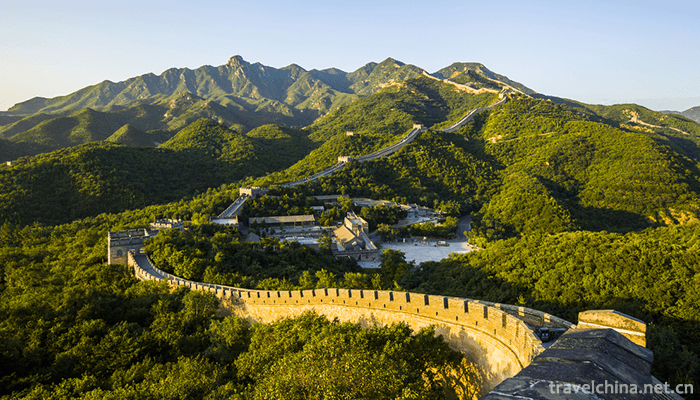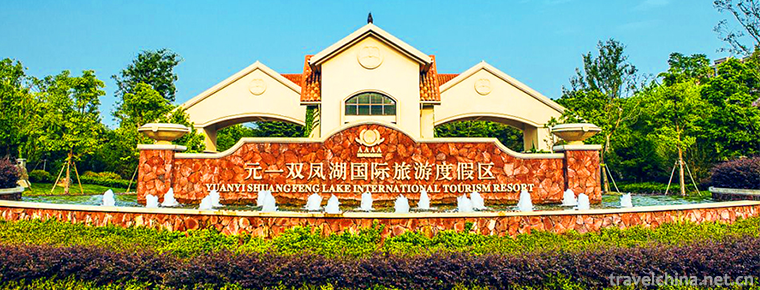2018-12-23

- By ChinaWiki.net
- Chinese Edition
- 2019-03-09
The Site of the Ancient Great Wall of the Warring States Period
When people mention the Great Wall, they will think of the Great Wall from Shanhaiguan to Jiayuguan. However, in Xilingol League, there are also the ancient Great Wall, which is not as famous as the Great Wall.
Zhao Great Wall, Handan
The South Great Wall of the Warring States was built in 333 B.C. and expanded successively by Zhangshui and Fushui dykes, so it is also called the Zhangshui Great Wall. Zhao Guonan Great Wall is located in the south of Handan City. It begins at the eastern foot of the Taihang Mountains and moves eastward along the North Bank of the ancient Zhangshui River. Zhangshui turns westward to the Northeast city. The Great Wall also turns northeast and ends at the West Bank of Zhangshui in the south boundary of Feixiang County. Zhao Guonan Great Wall is specifically distributed in today's Heguan Province, Shexian, Cixian, Linzhang, Chengan, Feixiang and other counties. It's about four hundred miles long.
The Zhangfu Great Wall is in the south of Zhao. "The Great Wall was built in the seventeenth year of Emperor Su (333 BC)," recorded in the History of Zhao Shijia. In the nineteenth year of King Wuling (307 B.C.), Zhaolou slowly conspired to say, "Because of the changes of the times, my predecessor built the Great Wall in Changnan, which was a danger of blocking Zhangfan." "This Great Wall is mainly used to prevent the Wei Dynasty, but at the same time, because of the strong Qin Dynasty, fearing that it might force the Wei Dynasty to attack, it also plays a role in preventing the Qin Dynasty.
The purpose of Zhao Guo's construction of the Great Wall on its southern border is very clear, which is to defend against the attack of Wei State. In the Warring States Period, the State of Wei was the earliest in the seven heroes of the Warring States Period. The transformation of Li Bi into the Han Dynasty, which began in 445 B.C., made the State of Wei prosperous and powerful. The State of Wei attacked from all sides and established its hegemonic position politically. The powerful State of Wei not only broke the traditional alliance of Han, Zhao and Wei, but also attacked the State of Zhao year after year. Even in 352 B.C., King Wei Hui seized Handan, the capital of the State of Zhao, and occupied it for three years before returning it under the interference of the State of Qi. At that time, in the confrontation between Zhao and Wei, Zhao was passively attacked, and Handan, the capital, was located in the North China Plain and in the Fourth World War. For these reasons, Zhao Guo had to build the Great Wall for defense. Therefore, the South Great Wall of Zhao State clearly reflects the nature of the military defense project of the Great Wall from its geographical location and military situation.
According to the records of Zhao Shijia and Hun Legend in Historical Records, Zhao Guo built the South Great Wall and the North Great Wall during the Warring States Period, and the functions of the two Great Wall were quite different.
The Northern Great Wall of Zhao State was constructed by King Wuling of Zhao in 300 B.C. after he moved north to Yan, Dai and west to Yunzhong and Jiuyuan, so it is also called the Great Wall of King Wuling. The northern Great Wall of Zhao State starts from Daijun in the East and goes through Yinshan Mountain in the middle and to Gaoque in the west. Its length is about 2,000 miles. The trend begins in Xuanhua, Hebei Province today, enters Inner Mongolia through Shangyi County, across the Dongyang River, and stops in Wulat Qianqi, through Xinghe County, Chayouqian Banner, Zhuozi County, northern suburbs of Hohhot City, Tuzuo Banner, Tuyouqi and northern suburbs of Baotou. In 386 BC, Zhao moved the capital from Jinyang to Handan. After three generations of efforts, he fought for the Central Plains with Qi and Wei countries for many times. As a result, not only did it not expand, but it was invaded by the powerful countries of Wei and Qi, forcing Zhao to build the South Great Wall and take a defensive approach. After King Zhao Wuling took office, he knew that he was unable to compete with other countries. He held a five-day conference in Xingong in 523 B.C. and decided to move northward. Beginning with the Xingong Meeting, Zhao's attention shifted from south to north to open up Hudi. At that time, there were Zhongshan and Beidi dynasties in the north of Zhao State, and Loufan and Linhu tribes in the northwest. These small countries and tribes are nomadic people in the north, good at riding and shooting. In order to conquer these nomadic peoples, the State of Zhao must establish cavalry units. "Historical Records of Huns" said: "And King Zhao Wuling has also become vulgar, Hu clothes, riding and shooting habits, North break through the forest Hu, building trouble to build the Great Wall, from generation to generation and Yinshan Mountain, to the high and cold. Therefore, King Wuling carried out the reform of Hufu cavalry, established a cavalry unit, and cooperated with the original cyclists and infantry, formed a powerful multi-service army, and then launched an attack. He first conquered Loufan and Linhu to the northwest, seized land and set up Yanmen and Yunzhong counties. Secondly, from 306 B.C., they began to march northward and destroyed Zhongshan State in 296 B.C. Then he continued to move northward into the Dynasty and became the Daijun of the State of Zhao. After Zhao Guo succeeded in moving northward, he built the Great Wall along the Yinshan Mountains and included the arable land into the Great Wall as far as possible. Three counties were set up in Xintuo area, and the Huaxia people in Central Plains were relocated to farm in the northern border counties. Therefore, the North Great Wall of Zhao State plays a role of encompassing a wide area and pushing the demarcation line between agriculture and animal husbandry northward.
Xilin Ancient Great Wall
The ancient Great Wall of Xilingol League was built in the Qin, Yan and Jin Dynasties, mostly made of earth and stone, and there are still obvious sites. The Great Wall of Qin Dynasty is located in the southern mountainous area of Ximeng, bending and extending in dangerous terrain, mostly built with earth and stone, with customs, parks and key roads; the Great Wall of Yan is located in the territory of Toronto County, Xiwuzhumuqin Banner and Abaga Banner, stretching thousands of miles in the vast grassland. The above buildings still leave behind a tall earth ridge.
Changping Ancient Great Wall
The site of Yangu Great Wall is located on the west hill 20 kilometers southwest of Changping Satellite City. It is 30 kilometers north and south. Changping belongs to Yanguo in ancient times. The northern section of the Great Wall was built in the 29 years of Yanzhao King (283 BC) at the end of the Warring States Period. Yan State built a defensive wall on the northern border. The Great Wall of Qin Dynasty was deserted and collapsed naturally. In 1984, it was declared as a cultural relic protection unit in Beijing. Most of the existing Yancheng Great Wall ruins are about 1.5 meters high and 2 meters wide, and the beacon towers of the enemy towers of Chengtai have also collapsed into a pile of rubble.



Ask a Question
Your email address will not be published.



0 Questions